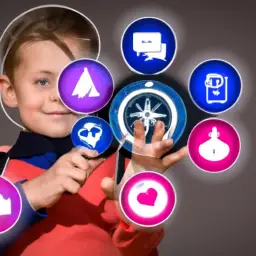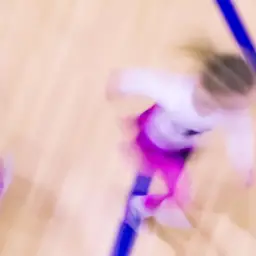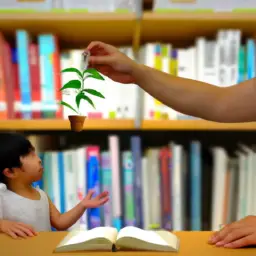Are you a parent or educator who wants to instill grit in children? Grit is the perseverance and passion to achieve long-term goals, and it’s an important trait for success in life. But, how do you teach it?
Traditional classes and online courses are two popular options for teaching children grit. In traditional classes, students attend a physical classroom with a teacher and interact with peers face-to-face. On the other hand, online courses offer flexibility and convenience, allowing students to learn at their own pace and from any location with an internet connection.
Both methods have their pros and cons, and it can be challenging to determine which one is better suited for teaching grit to children. In this article, we’ll compare traditional classes and online courses and explore the effectiveness of each method for instilling grit in children.
Key Takeaways
- Both traditional classes and online courses can be effective in teaching grit to children, with each method offering unique benefits.
- Traditional classes offer personal interaction and engagement, while online courses offer flexibility and convenience.
- The combination of real world experiences and motivational support from online courses can help children develop grit, perseverance, and resilience.
- Student engagement is a key factor in the effectiveness of online courses, and educators should take advantage of opportunities provided by both methods to help their students develop critical life skills.
Overview of the Importance of Teaching Grit to Children
You might be thinking, "Why is teaching grit to children so important?"Well, let me tell you, it’s because grit is the key to success in life, and it starts with building resilience and perseverance at a young age.
The importance of grit in child development cannot be overstated, as it helps children to face challenges with determination and resilience. In fact, research has shown that grit is a better predictor of success than IQ or talent.
So, how do we teach grit to children? There are several strategies for teaching grit in children, including modeling the behavior ourselves, providing opportunities for them to practice perseverance, and praising their efforts rather than their natural abilities.
It’s important to help children understand that failure is a natural part of the learning process, and to encourage them to keep trying even when things get tough. By teaching children these skills early on, we can set them up for success in all areas of their lives.
Traditional Classes
Attending in-person learning environments allows for a unique level of personal interaction and engagement between students and teachers. Traditional classes make it easier for educators to use a variety of teaching methods to teach grit to children. Teachers can use practical and hands-on activities that allow students to develop their perseverance and self-discipline skills.
For instance, teachers can assign group projects that require students to work together and overcome obstacles, such as communication barriers or conflicting ideas. By doing so, students can learn how to manage their emotions, handle stress, and stay focused on their goals.
Moreover, traditional classes offer greater opportunities for student engagement. Students can interact with their peers and teachers face-to-face, which can help build stronger relationships and foster a sense of belonging. This is particularly important for children who may struggle with motivation or self-esteem issues.
In traditional classes, teachers can also provide immediate feedback to students, which can help them gauge their progress and identify areas where they need improvement. This can be particularly motivating for students who may feel discouraged or frustrated with their progress.
Overall, traditional classes have several advantages when it comes to teaching grit to children, and educators should take advantage of these opportunities to help their students develop these critical life skills.
Online Courses
If you’re interested in teaching grit to children, online courses can offer you several advantages.
First, online courses are flexible and convenient, allowing you to complete coursework whenever and wherever you want.
Additionally, self-paced learning enables you to take control of your learning experience and move at a pace that suits you.
Finally, online courses often utilize technology-based learning tools, such as interactive quizzes and videos, to enhance your understanding of the material.
Flexibility and Convenience
Imagine being able to attend your child’s soccer game and still have the flexibility to complete their coursework on their own time through online courses. This is one of the biggest advantages of online courses for teaching grit to children.
With traditional classes, students have to be physically present in the classroom at specific times, which can make it difficult to balance other activities or responsibilities. Online courses, on the other hand, allow students to manage their time more effectively and work at their own pace, giving them the freedom to pursue other interests or obligations.
Here are some benefits of the flexibility and convenience offered by online courses:
- Students can learn when it’s most convenient for them, whether that’s early in the morning, late at night, or on weekends.
- Online courses can be accessed from anywhere with an internet connection, making it easy to learn while traveling or on vacation.
- Students can work at their own pace, taking more time on difficult concepts or moving quickly through material they already understand.
- Personalized learning is made possible through online courses, as students can focus on the areas they need the most help with, rather than being constrained by the pace of the entire class.
Overall, the flexibility and convenience provided by online courses can be a major advantage for teaching grit to children. By giving students the freedom to manage their own time and pursue other interests, online courses can help children develop the perseverance, resilience, and self-discipline they need to succeed.
Self-Paced Learning
Self-paced learning is a game-changer for students who want to take control of their education and reach their full potential. With online courses, students have the flexibility to learn at their own pace and customize their learning experience. This personalized approach to education allows students to focus on their strengths and weaknesses, and gives them the opportunity to spend more time on the topics they find challenging.
Moreover, self-paced learning also teaches children important time management skills. Students are responsible for setting their own deadlines and completing assignments on time. This not only helps them develop a sense of accountability, but also gives them the freedom to balance their studies with other activities.
By learning how to manage their time effectively, students are better equipped to handle the demands of higher education and the workforce.
Technology-Based Learning Tools
You can enhance your learning experience by utilizing technology-based learning tools that offer interactive and engaging ways to master new concepts and skills.
Interactive simulations are one such tool that provides learners with an immersive experience where they can explore and experiment with ideas in a safe environment. For instance, a science student can use a simulation to witness chemical reactions without actually having to mix the chemicals themselves. This not only saves time but also eliminates the risk of accidents in the laboratory. Interactive simulations make learning more fun and memorable by enabling learners to visualize complex ideas.
Gamification techniques are another effective tool for enhancing learning experiences. By incorporating game elements, learners are more motivated to engage with the material and are more likely to retain the information. For instance, a language learning app may use gamification techniques such as rewards and progress bars to encourage learners to practice regularly. This not only makes learning more enjoyable but also helps learners to track their progress and stay motivated.
By using technology-based learning tools such as interactive simulations and gamification techniques, learners can make the most of their online learning experience.
- Interactive simulations offer a safe environment for learners to experiment with ideas.
- Gamification techniques motivate learners to engage with the material and retain information.
- These tools make learning more fun and memorable.
- They provide learners with a way to track their progress and stay motivated.
Pros and Cons of Traditional Classes
If you’re looking for a structured and interactive learning environment, traditional classes may be the way to go. Traditional classes offer the advantage of face-to-face interaction with instructors and peers, allowing for immediate feedback and personalized attention.
Additionally, traditional classes offer a set schedule and routine, which can help students develop time management and organizational skills. However, there are also some disadvantages to traditional classes.
For one, they may not be as flexible as online courses, which can be completed at the student’s own pace and on their own schedule. Traditional classes also require students to physically attend class, which can be difficult for those with transportation or scheduling issues.
Furthermore, traditional classes may not offer as much access to technology-based learning tools, which can be a disadvantage in today’s digital age.
Pros and Cons of Online Courses
Although online courses offer the convenience of remote learning, there are also drawbacks to this mode of education. One of the biggest concerns is the effectiveness of online learning compared to traditional classroom settings. While online courses may provide flexibility in scheduling and the ability to learn at your own pace, some argue that the lack of face-to-face interaction with teachers and peers can hinder learning and the development of important skills, such as critical thinking and problem-solving.
Another factor that can impact the effectiveness of online courses is student engagement. Without the physical presence of a teacher or classmates, it may be harder for students to stay motivated and actively participate in the learning process. In order to address this issue, online courses often incorporate interactive elements, such as virtual discussions and group projects, to encourage collaboration and engagement. However, it ultimately falls on the individual student to take responsibility for their own learning and make the most out of the resources provided in an online course.
| Pros | Cons |
|---|---|
| Flexibility in scheduling | Lack of face-to-face interaction |
| Ability to learn at your own pace | Difficulty staying motivated |
| Incorporation of interactive elements | Responsibility falls on individual student |
The table above provides a quick overview of the pros and cons of online courses. While they offer some advantages, such as flexibility and personalized learning, they also come with their own set of challenges. When considering whether online courses are the best option for teaching children grit, it’s important to weigh these factors and determine what approach will be most effective for each individual student.
Which Method is Better Suited for Teaching Grit to Children?
Get ready to discover the most effective way to instill grit in your child’s character.
When it comes to teaching grit to children, both traditional classes and online courses have their pros and cons. However, the method that is better suited for teaching grit to children is a combination of both.
Real world experiences are critical in teaching grit to children as they provide opportunities for children to learn how to overcome adversity. Traditional classes provide a physical space for children to learn through real-life experiences.
On the other hand, online courses provide children with a platform to learn and practice their grit in a virtual setting. When children face challenges and obstacles in an online course, they can seek motivational support from their virtual peers, teachers, and parents.
The combination of real world experiences and motivational support from online courses can help children develop grit, perseverance, and resilience in the face of adversity.
Frequently Asked Questions
What is the definition of "grit"and why is it important to teach to children?
Grit is defined as the ability to persevere through challenges and maintain long-term goals despite setbacks.
Teaching children grit is important because it helps them develop resilience, confidence, and perseverance. When children learn to push through tough times and setbacks, they develop a growth mindset and are more likely to succeed in the future.
Teaching grit can also help children develop a strong work ethic and a sense of purpose. Real-life examples of successful grit development include athletes who train tirelessly, entrepreneurs who build successful businesses, and students who overcome academic challenges to achieve their goals.
By teaching grit to children, you’re giving them the tools they need to succeed in all aspects of their lives.
How do traditional classes and online courses differ in terms of the level of interaction between students and teachers?
When it comes to teacher-student interaction, traditional classes and online courses differ in a number of ways. In traditional classes, students have the opportunity to interact face-to-face with their teachers, ask questions, and receive immediate feedback.
This type of interaction is often lacking in online courses, which rely on virtual communication methods such as discussion forums and email. While online courses may offer some opportunities for interaction, they are often less personal and can be more challenging for students who need individualized attention and support from their teachers.
Overall, the level of teacher-student interaction in traditional classes is generally higher than in online courses.
Can parents play a role in teaching grit to their children outside of traditional classes and online courses?
As a parent, you can definitely play a role in teaching grit to your children outside of traditional classes and online courses. Parental involvement is crucial in instilling this trait in your child.
You can engage your child in practical activities that require perseverance and resilience. Encourage them to pursue their interests and passions, even if they face obstacles along the way. Set goals with them and help them develop strategies to achieve them.
Teach them to embrace failure as a learning opportunity and to never give up. By modeling grit yourself and providing opportunities for your child to develop it, you can help them become more resilient and successful in all areas of their life.
Are there any specific teaching methods or techniques that are particularly effective for instilling grit in children?
When it comes to instilling grit in children, there are a number of effective teaching methods and techniques that can be used.
One important factor is the role of feedback, as providing children with constructive criticism can help them learn from their mistakes and become more resilient.
Additionally, it’s important to incorporate real-life experiences into the learning process, as this can help children develop grit by teaching them how to navigate difficult situations and overcome obstacles.
Whether children are learning in traditional classrooms or through online courses, these strategies can be effective in helping them build grit and achieve success in all areas of their lives.
How do factors such as age, socioeconomic status, and cultural background impact the effectiveness of traditional classes versus online courses for teaching grit to children?
When it comes to teaching grit to children, age differences and cultural barriers can impact the effectiveness of both traditional classes and online courses.
Younger children may have a harder time understanding and implementing grit concepts, while older children may be more resistant to change.
Additionally, cultural beliefs and values can play a significant role in how children view grit and its importance.
Some cultures may place a higher emphasis on perseverance and resilience, while others may prioritize other values.
Overcoming these cultural barriers can be a challenge for both traditional classes and online courses, but it’s crucial for instilling grit in all children.
Conclusion
So, which method is better suited for teaching grit to children? The truth is, both traditional classes and online courses have their pros and cons.
Traditional classes offer face-to-face interaction with teachers and peers, which can provide social and emotional support. On the other hand, online courses offer flexibility and convenience, allowing children to learn at their own pace.
Ultimately, the decision depends on the individual needs and preferences of the child and their family. It may be beneficial to try a combination of both methods to fully develop grit and other important life skills.
Regardless of the approach, teaching grit to children is essential for their success and resilience in all areas of life.

















































































































